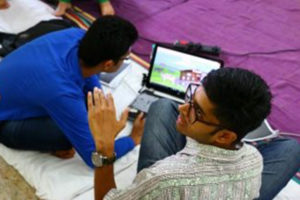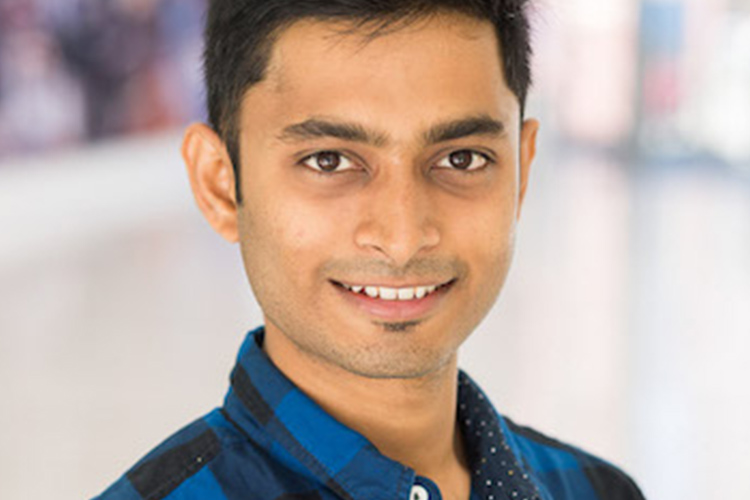First-year Tata Fellow is half a world away from his comfort zone—and that’s exactly how he likes it.
As the son of a farmer, Nikhil Mallareddy is no stranger to the trials and tribulations of agriculture in his native India. Now, the first-year Tata Fellow and Master’s student in the MIT Technology & Policy Program is part of a team developing a soil health recommendation system to help farmers boost their crop production.
Nikhil sat down with us to talk about his journey, from trying to get into the Indian Administrative Service (acceptance to MIT is easy in comparison!), to dodging cars in Boston, to the dream of bringing solutions back to India.
Coming to MIT was also your first trip to the US. Tell us about your path.
I graduated from IIT Madras with a degree in mechanical engineering, and my first job was in a consumer goods factory. I was an engineer working on improving energy efficiency and complying with pollution norms, and my goal was to help my company achieve their sustainability goals. Through that job, I began to see the shortcomings of the regulatory policies around sustainability, and became really interested in how policy works and what role it plays in the whole system.
My engineering experiences spurred my interest in public service. I thought if I wanted to make a real impact on a larger scale I should go for a job with the Indian Administrative Service (IAS). This involves sitting for a series of exams, and each process takes a full year. The competition is intense, but it was a good opportunity to learn economics, history, and politics—all stuff I was not familiar with.
I sat for the exams twice and was not selected, but it changed my way of looking at problems. Before, I was used to looking at things as an engineer—everything was an engineering problem. But when I sat down to study policy, I began to see the underlying reasons for why things were the way they were. Studying India’s history, I could understand how we came to the place we are now—my eyes were opened to a more holistic view of things.
After that, I started looking for other pathways to achieve what I wanted, which is what led me to graduate school at MIT. I knew I wanted to find a policy program, but I didn’t want to completely forego my engineering background. So when my friend from IIT Madras, who is also now a Tata Fellow, told me about the Technology & Policy Program and the Tata Center, it was the perfect chance to connect engineering to Indian policy.
What do you enjoy about being at MIT, and what do you miss about India?
 I love that MIT is very challenging. I heard this quote: ‘If you’re the smartest guy in the room, you’re probably in the wrong room.’ I completely believe in putting myself in rooms with brilliant peers. It’s been a nice surprise that the Tata Fellows are really interested in what’s going on back home in India, even though most of them are not Indian.
I love that MIT is very challenging. I heard this quote: ‘If you’re the smartest guy in the room, you’re probably in the wrong room.’ I completely believe in putting myself in rooms with brilliant peers. It’s been a nice surprise that the Tata Fellows are really interested in what’s going on back home in India, even though most of them are not Indian.
And the MIT and Boston ecosystem is so vibrant when it comes to entrepreneurship. As I get to know the resources around MIT, entrepreneurship is something I’m becoming more interested in. I want to create a positive impact on the ground, and I feel entrepreneurship could help me do that. If the product that I am working on succeeds and makes business sense, I may move toward doing a startup.
As for India, it’s my comfort zone. When I’m crossing the road there, I know the cars will stop for me. Here traffic moves much faster, so you really have to watch out. And I miss Indian food, of course!
You’re part of an interdisciplinary team working on soil health. What is your research area, and what will success look like?
The students who worked on the soil health project before me made a lot of progress in creating the technology with input from farmers. Now we’re really looking at the context instead of the product itself. I want to make connections across the agriculture system—we are looking at policy makers, government/agricultural research institutes, and startups in the agricultural space.
At the same time, I am trying to see how farmers will make decisions based on our product’s recommendation. For example, will they change the way they buy fertilizer? What factors contribute to their choices?
Ultimately, success will mean taking the product to the field and scaling it up.



